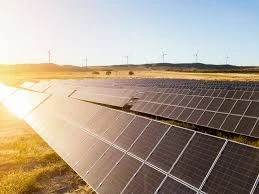easy solar panel project
An Easy Solar Panel Project for Sustainable Living
In today's world, where the conversation around climate change is more pressing than ever, finding alternative energy sources is crucial. One of the most viable solutions is solar energy. With advancements in technology and decreasing costs, creating a solar panel system for your home has become more accessible than ever. This article aims to guide you through an easy solar panel project that will not only help save on electricity bills but also contribute to a more sustainable lifestyle.
Understanding Solar Energy
Solar energy harnesses the power of the sun's rays through photovoltaic (PV) cells, which convert sunlight directly into electricity. Solar panels are typically made up of numerous solar cells that generate direct current (DC) electricity when exposed to sunlight. This electricity can be used immediately, stored in batteries for later use, or converted into alternating current (AC) for use in home electrical systems.
Project Overview
This solar panel project is designed for beginners and can be scaled based on your energy needs. The main components you will need are
1. Solar Panels The heart of the project; choose the size and number based on your energy requirements. 2. Charge Controller Regulates the voltage and current coming from the solar panels to the batteries, preventing overcharging. 3. Batteries Store the energy generated during the day for use at night or during cloudy days. 4. Inverter Converts DC power from the batteries into AC power for household use. 5. Wiring and Mounting Hardware Necessary for connecting all components securely and safely.
Preparing Your Location
The first step in your solar panel project is to choose an optimal location for your panels. Aim for a spot that receives direct sunlight for the majority of the day with minimal shade from trees or buildings. The roof of your house is often ideal, but a ground-mounted system can also work if space allows.
Assembling the Solar Panel System
easy solar panel project

1. Mounting the Panels Begin by securely mounting the solar panels to the chosen surface. Ensure they are angled appropriately to maximize sun exposure—typically, this means tilting them towards the equator and adjusting for your local latitude.
2. Connecting the Charge Controller Install the charge controller as close to the batteries as possible. Connect the solar panels to the input terminals of the charge controller, following the manufacturer’s wiring diagram carefully.
3. Installing the Batteries Choose a location that is dry and well-ventilated for your batteries. Connect the output terminals of the charge controller to the batteries. Ensure proper polarity—positive to positive and negative to negative—to avoid damage.
4. Connecting the Inverter Finally, connect the inverter to the batteries. This device is essential for converting the stored energy into a usable form for your home appliances. Follow the inverter’s instructions closely and ensure it is rated for your needs.
Safety First
While the project is relatively straightforward, it’s essential to prioritize safety throughout the process. Always wear appropriate protective gear and ensure grounding procedures are followed to avoid electrical hazards. If you’re unsure about any part of the installation, consulting with a professional can offer peace of mind.
Benefits of Your Solar Panel Project
Once your system is complete, you can enjoy the benefits of harnessing solar energy. The energy generated can significantly reduce your electricity bills, and any surplus energy can potentially be sold back to the grid, depending on local regulations. Furthermore, using solar energy reduces your carbon footprint, contributing positively to the environment.
Conclusion
Taking on an easy solar panel project promotes not only personal savings but also a commitment to sustainable living. As we continue to face environmental challenges, small individual actions can lead to substantial collective change. By investing in solar energy, you are not just securing a cleaner source of power for your home—you are also taking a meaningful step toward a more sustainable future. So gather your materials, follow the steps outlined above, and embark on your journey into solar energy!
-
Unlocking Energy Freedom with the Off Grid Solar InverterNewsJun.06,2025
-
Unlock More Solar Power with a High-Efficiency Bifacial Solar PanelNewsJun.06,2025
-
Power Your Future with High-Efficiency Monocrystalline Solar PanelsNewsJun.06,2025
-
Next-Gen Solar Power Starts with Micro Solar InvertersNewsJun.06,2025
-
Harnessing Peak Efficiency with the On Grid Solar InverterNewsJun.06,2025
-
Discover Unmatched Efficiency with the Latest String Solar InverterNewsJun.06,2025







